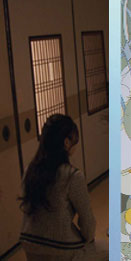コース
 フルカンファレンス
フルカンファレンス
 1日券
1日券
30年以上に渡り、シーグラフのコースプログラムは、コンピュータグラフィックス及びインタラクティブ技術の最前線の成果をわかりやすく解説してきました。このプログラムでは、国際的な専門家による、初級から上級向けのチュートリアルを開講します。アニメーション制作、ヒューマンインタラクション、ゲーミング、レンダリング技術、計算幾何学、モバイルデバイス等、様々な分野のチュートリアルを受講できますシーグラフアジア2009では、何百人もの業界人、開発者、研究者、アーチスト、学生が“コース”プログラムに参加し、各自の分野の知識を広め、また深め、最新の研究分野の知識を習得できます。
シーグラフアジア2009 コース一覧
Biophysically Based Appearance Models: The Bumpy Road Toward Predictability
Saturday, 19 December | 12:45 PM - 2:30 PM | Room 511/512
This course addresses practical issues involved in the development of biophysically based appearance models. Because these models are used not only in computer graphics, but also in other scientific applications (for example, noninvasive diagnosis of medical conditions and remote sensing of natural resources), the course also aims to foster cross-fertilization with these fields. The course begins by providing a concise biophysical background and discussing the key concept of predictability. It continues by examining the specific constraints and pitfalls found in each of the key stages of the simulation framework (data collection, modeling, and evaluation) and discussing alternatives that could improve the fidelity of the entire process. Once a model is designed, implemented, and evaluated through a sound methodology, its scope of applications can be expanded to address a wide range of scientific questions. For example, computer simulations are regularly being used by life science researchers to understand and predict material-appearance changes prompted by mechanisms that cannot be fully studied using traditional experimental procedures. The course closes with an examination of recent examples of computer graphics appearance models that can also be employed in such interdisciplinary research efforts.
Level
Advanced
Presentation Language
Presented in English
Prerequisites
Familiarity with basic optics concepts and radiometric terms. Attendees should have a working knowledge of standard rendering techniques and terminology. Experience with Monte Carlo methods is helpful but not required.
Instructor(s)
Gladimir Baranoski University of Waterloo
Instructor Bio(s)
Gladimir Baranoski Gladimir Baranoski is an associate professor in the School of Computer Science, University of Waterloo, Canada. His current research interests include predictive simulation of light interactions with organic and inorganic materials. The results of his interdisciplinary research in this area have been made available to the scientific community through publication of articles in journals and conference proceedings in computer graphics and related fields such as applied optics and remote sensing. He has also organized tutorial and course presentations for computer graphics conferences and remote-sensing symposiums on topics related to the main theme of this course.


